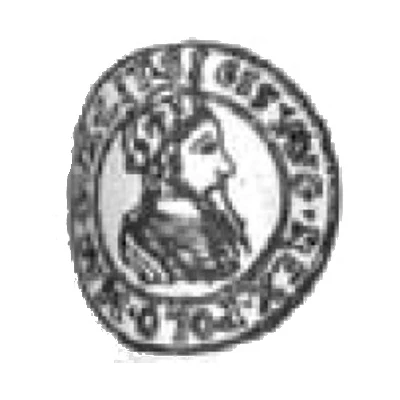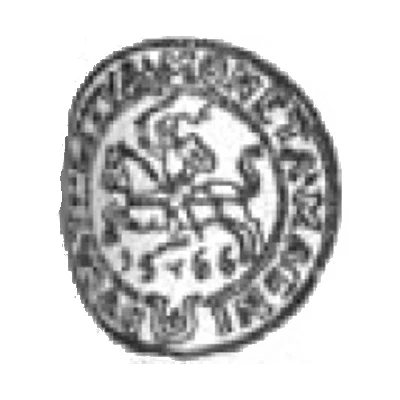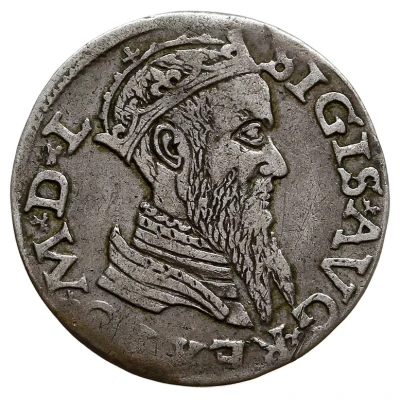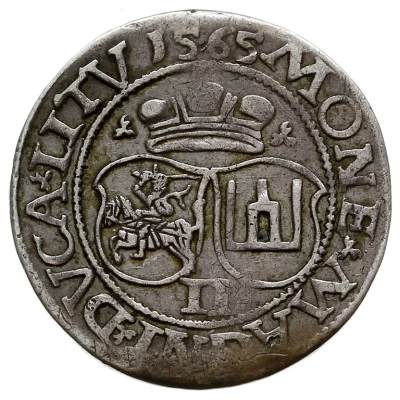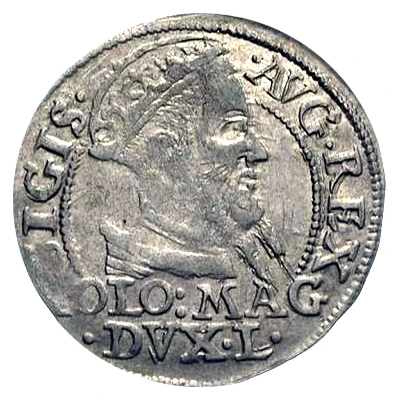
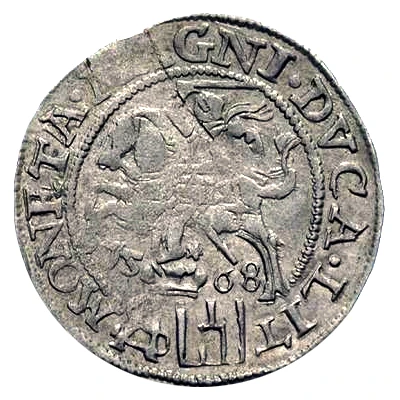

1 Groat - Sigismund II Augustus Late bust
| Billon (.344 silver) | 2.06 g | 23 mm |
| Issuer | Grand Duchy of Lithuania |
|---|---|
| Grand duke | Sigismund II Augustus (1548-1572) |
| Type | Standard circulation coin |
| Years | 1566-1568 |
| Value | 1 Groat |
| Currency | Lithuanian Groat (1495-1580) |
| Composition | Billon (.344 silver) |
| Weight | 2.06 g |
| Diameter | 23 mm |
| Shape | Round (irregular) |
| Technique | Hammered |
| Demonetized | Yes |
| Updated | 2024-10-06 |
| Numista | N#46216 |
|---|---|
| Rarity index | 88% |
Reverse
Knight on horseback left, brandishing sword. Date below divided by ducal cap. Legend divided at bottom by SA monogram and Jagiello arms.
Script: Latin
Lettering:
MONETA.MAGNI.DVCA.LITV
1568
SA
Translation: Coinage of the Grand Duke of Lithuania.
Comment
Columns of Gediminas mint mark indicates Vilnius (Wilno) mint
Horseshoe (Jestrzebiec, coat of arms of Stanisław Myszkowski, Krakow voivoda) indicates Tykocin mint.
List of variants with photos:
1566 - Kopicki 3283, Gum. 610 as in main photo
1566 - Kopicki 3284, Gum. 611 Jestrzebiec (horseshoe) symbol reverse:
© Gabinet Numizmatyczny Damian Marciniak
1567 - Kopicki 3285, Gum. 610 horse's tail curls downward:
© Poznanski Dom Aukcyny
1567 - Kopicki 3286, Gum. 610 horse's tail curls upward:
© Antykwariat Michal Niemczyk
Interesting fact
One interesting fact about the 1 Groat - Sigismund II Augustus (Late bust) 1566-1568 coin from the Grand Duchy of Lithuania is that it was made of Billon, which is an alloy of silver and other metals, in this case, containing 34.4% silver. This was a common practice in the minting of coins during that time period, as it allowed for the creation of coins with a lower silver content, making them more affordable to produce and circulate.



